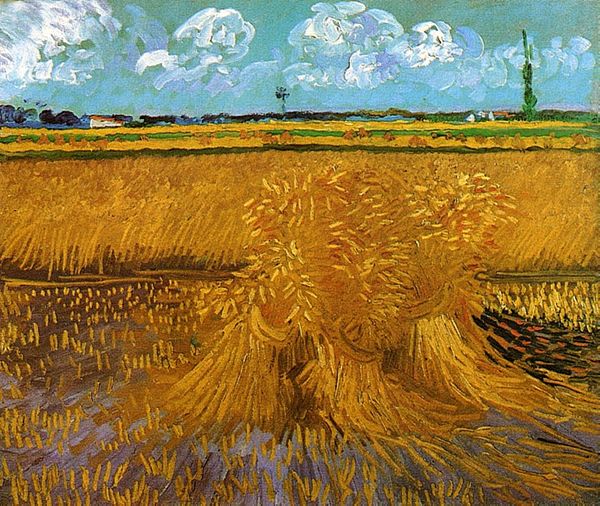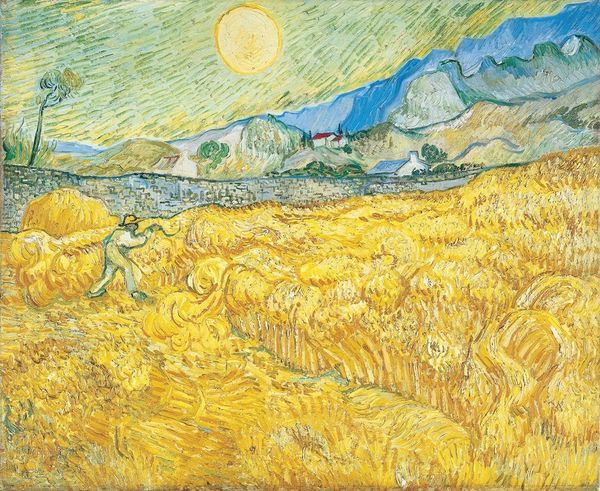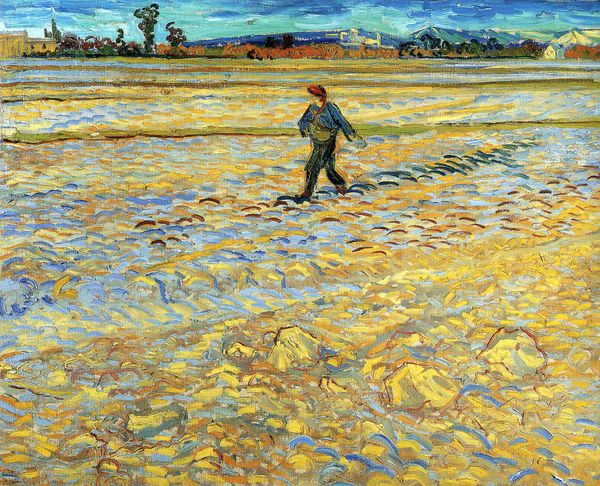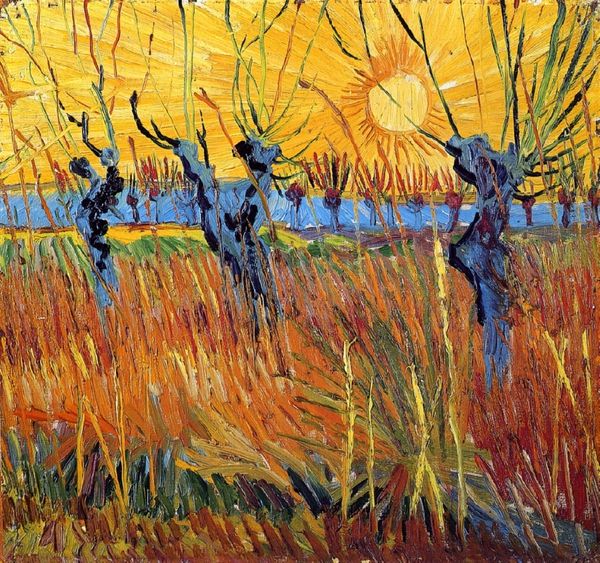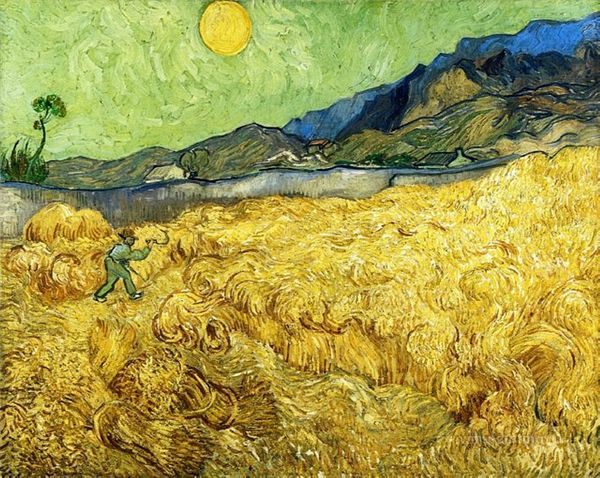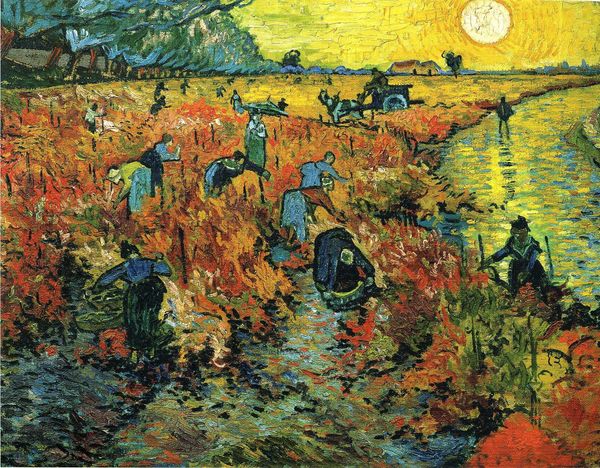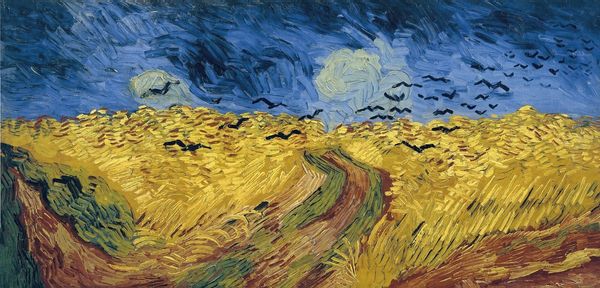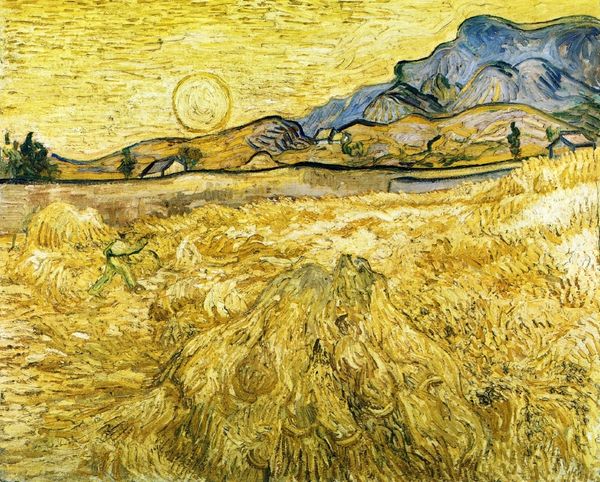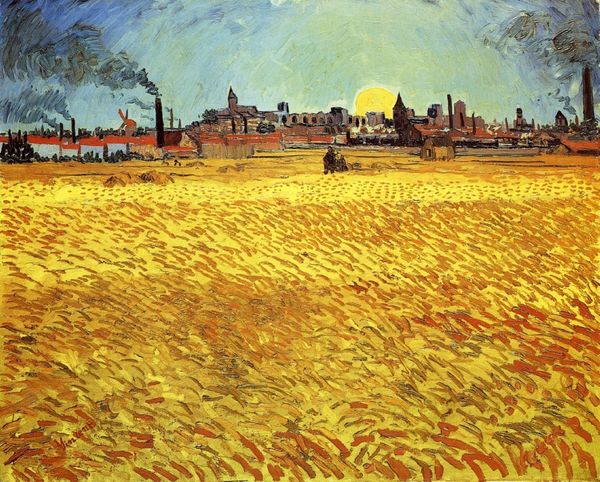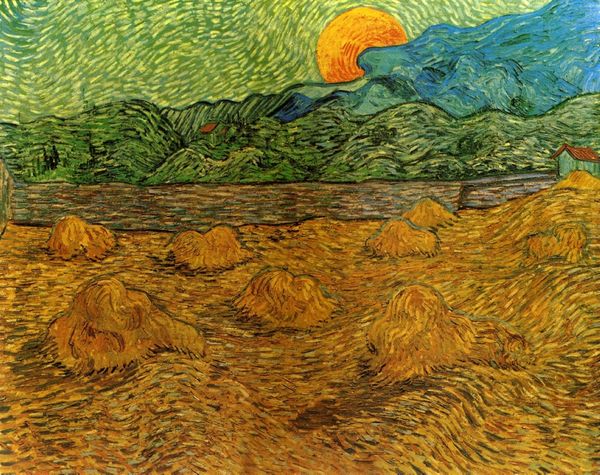
painting, plein-air, oil-paint
#
impressionist
#
painting
#
impressionism
#
impressionist painting style
#
plein-air
#
oil-paint
#
landscape
#
impressionist landscape
#
figuration
#
history-painting
#
post-impressionism
#
nature
#
expressionist
#
realism
Dimensions: 162.5 x 204.5 cm
Copyright: Public domain
Editor: We're looking at Van Gogh’s “The Sower,” painted in 1888. It's oil on canvas and currently at the Kröller-Müller Museum. What strikes me most is the bold contrast between the bright yellow sun and the blue field. How do you interpret this work? Curator: Well, socially and historically, we need to remember that Van Gogh was painting during a period of massive rural to urban migration. He repeatedly depicted the figure of the sower, idealizing the peasant and the agrarian life in the face of industrialization. The vibrant colors you noticed play into this—they aren’t just aesthetic choices but speak to the perceived vitality of rural life. Editor: So, it’s not just about pretty colors. It’s about making a statement? Curator: Exactly! And consider the context of art institutions at the time. Landscape paintings were becoming increasingly popular, showcased in salons and exhibitions, becoming part of the established art world. But Van Gogh, despite using the landscape genre, imbued it with personal expression and social commentary, disrupting conventional expectations. How do you see this connection with the history painting? Editor: I see now! I didn't see before how he places his peasant as a historical figure. Do you think it reflects nostalgia for an older way of life? Curator: Absolutely. His romantic vision, charged with emotion, also has an aspect related to Millet’s depictions of labor. We should always analyze who is invited – and who isn't - in art exhibitions. By idealizing this labor class and putting it in painting, Van Gogh also questions who art serves. Editor: That is a different interpretation than what I initially thought, focusing less on beauty, and more on history. Curator: That's the power of historical context! It helps us unravel the layers of meaning embedded in art, which always operates within and often challenges a network of social forces and conventions. I always gain so much by exploring your views. Editor: Same here, learning what Van Gogh depicts within socio-political landscapes offers me a complete vision now. Thanks for this interesting dialogue.
Comments
No comments
Be the first to comment and join the conversation on the ultimate creative platform.
